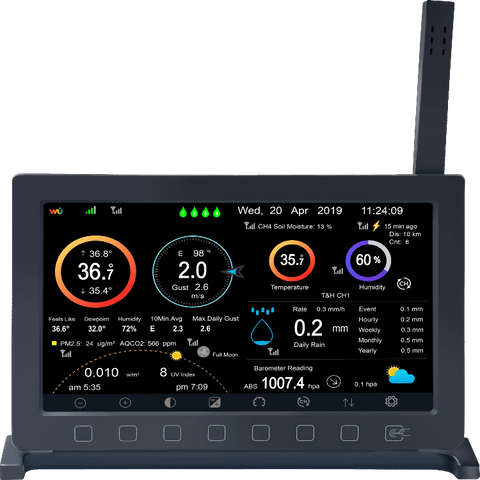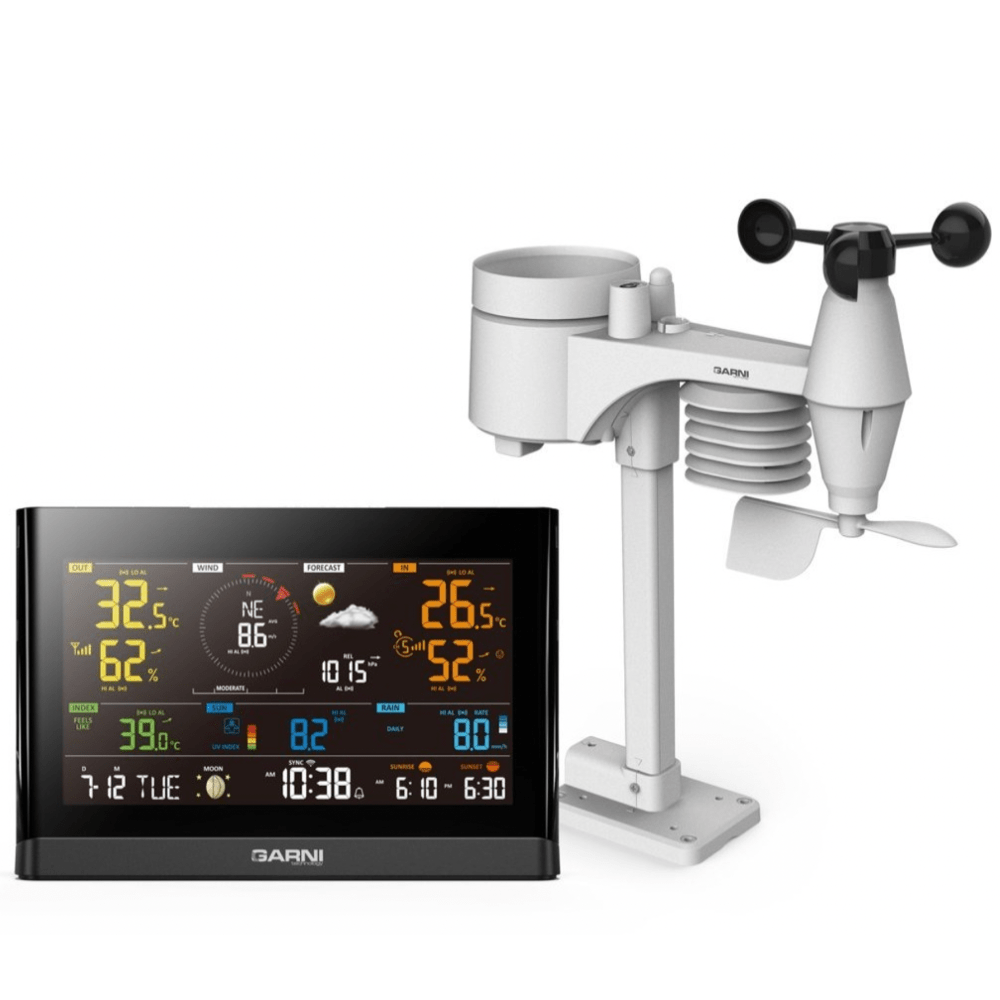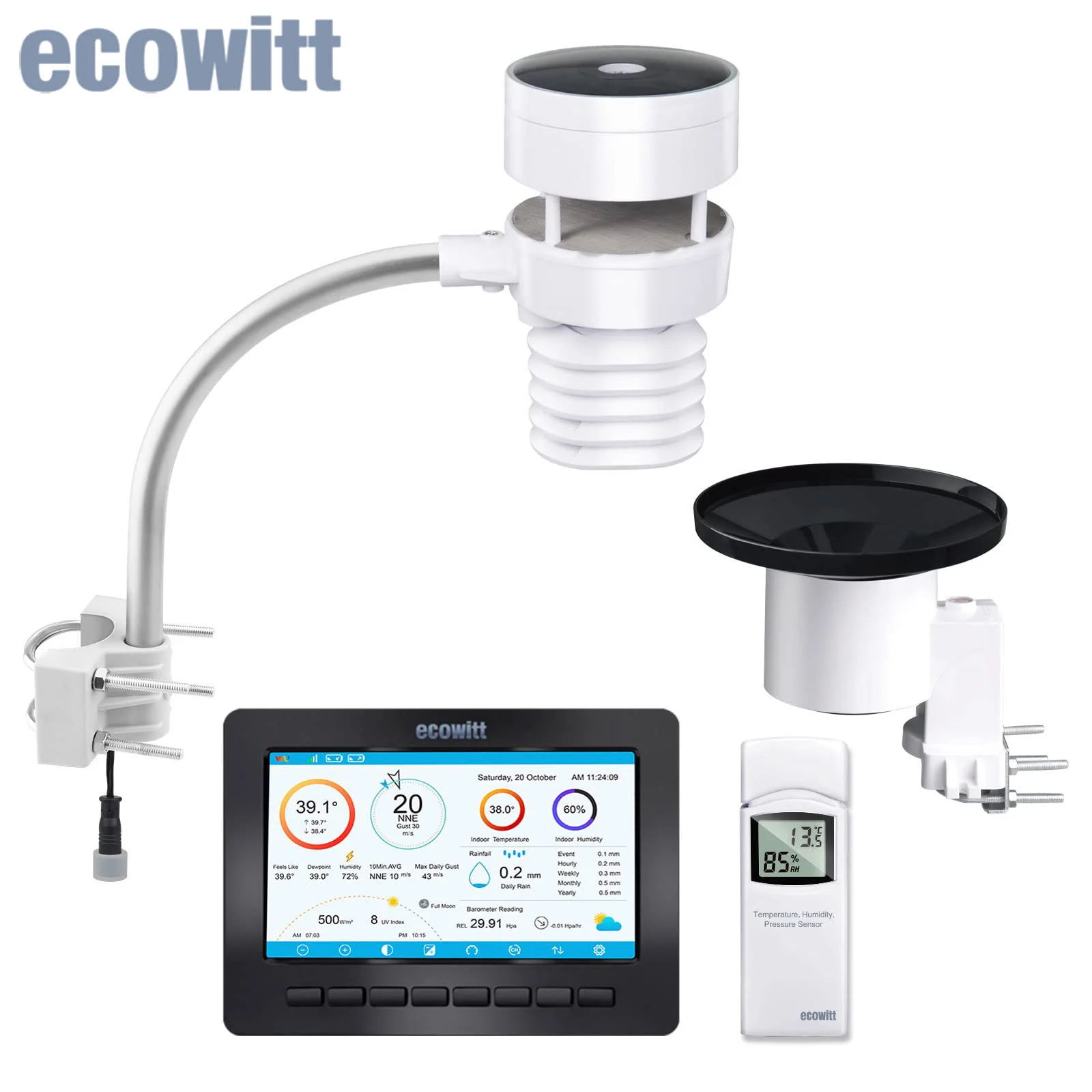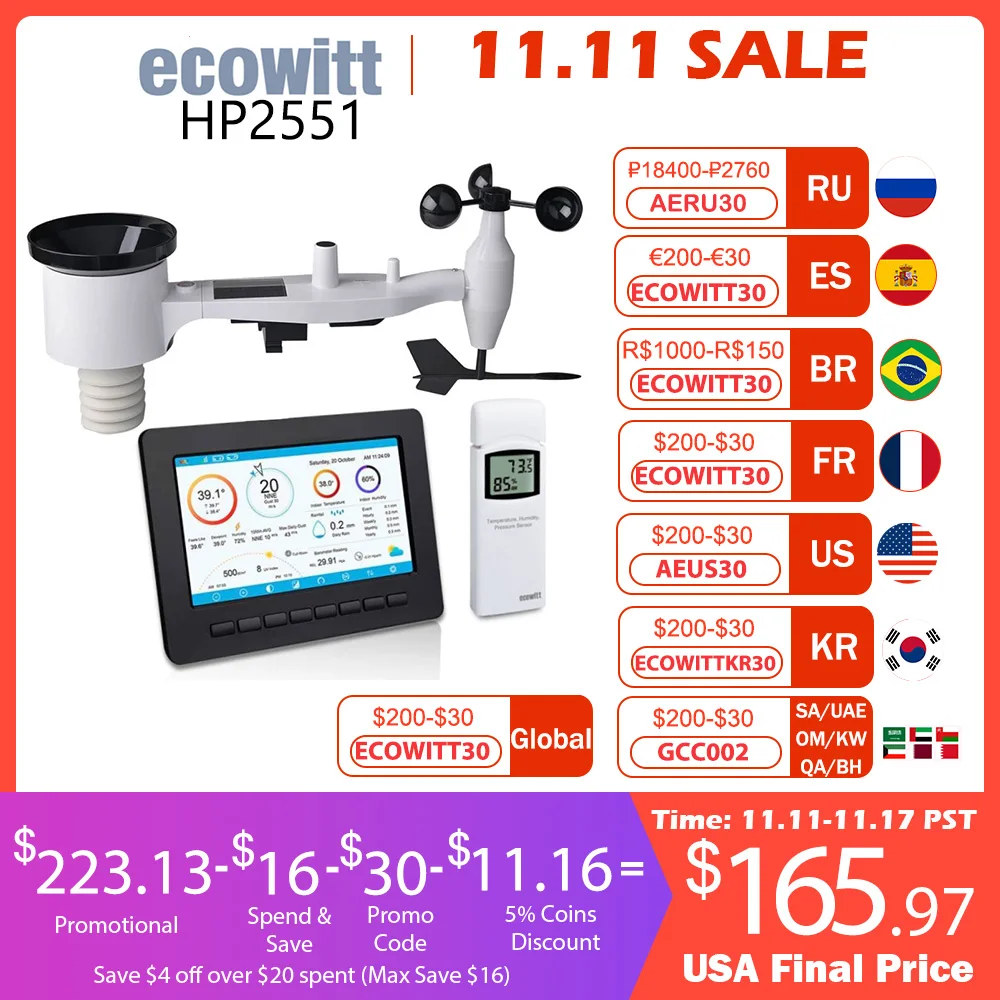







Storm glass or weather forecast bottles are a device invented by navigators in the 17th century to predict weather changes to predict storms. Although this is a great invention, the inventors were not known to the general public at the time.
Later, the equipment became popular in 1860 under the propaganda of the then British Navy Admiral general: Robert FitzRoy (Director of the British Meteorological Agency).
A sealed glass container is filled with a transparent solution of several chemicals. According to changes in external temperature and weather, different types of crystals will appear in the bottle And a modern digital humidity / thermometer is given for extra reassurance (XXL version only)



The anemometer sensor pack measures wind speed, wind direction, UV level and Solar intensity.
Two additional sensors are supplied, a rain sensor & separate temperature / humidity sensor. The rain sensor is self emptying for easy of use.
The 7" high resolution TFT colour screen has a friendly & well-designed interface with two selectable backgrounds (dark or light). The console displays wind speed and direction, dew point, rainfall, indoor outdoor temperature and humidity, barometric pressure, moon phase, solar radiation and UV. There is also a full colour weather forecast function and you can also purchase a microSD memory card to store historical data. A 1GB card will store on average 10 years of data.
This data, along with the outdoor sensor data is uploaded to the FREE Ecowitt service via WiFi and is used to calculate rainfall rate, wind chill, dew point and heat index. All of this can be viewed on an iOS, Google App, or Ecowitt weather website in a browser.
You are not just limited to weather data on the Ecowitt weather site or App, you can share your data further afield with free access to The UK MetOffice WoW service, Weather Underground, WeatherCloud and your own web server.
Unlike some other stations, the Ecowitt HP2552 can be expanded with a variety of additional sensors which currently include:
All of these are available to view in the App, or online via Ecowitt.net and in the 3rd party services that support this sensor type.










